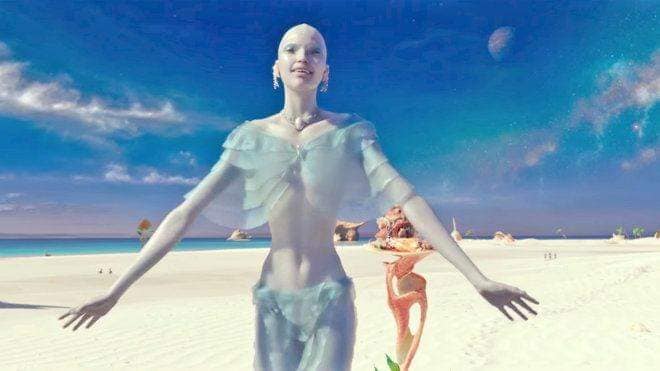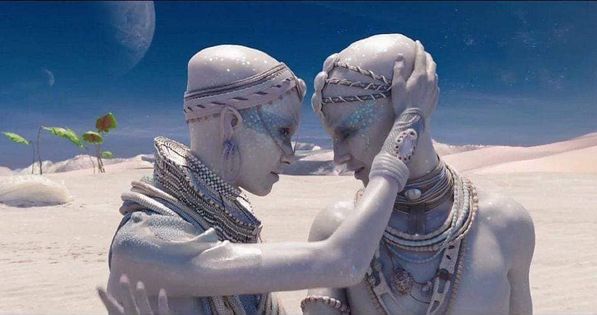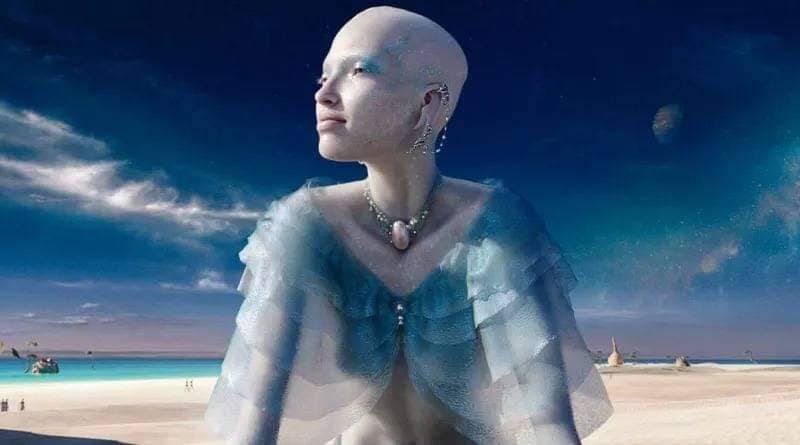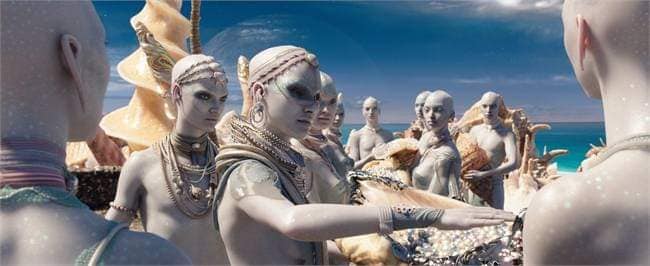Valerian and the City of a Thousand Planets (2017)

Valerian and the City of a Thousand Planets (2017), directed by Luc Besson, is a visually stunning science fiction film based on the French comic series “Valérian and Laureline” by Pierre Christin and Jean-Claude Mézières. The film is known for its ambitious world-building, vibrant visuals, and high-concept science fiction elements, although it received mixed reviews regarding its narrative and character development.
The story is set in the 28th century, where special operatives Major Valerian (Dane DeHaan) and Sergeant Laureline (Cara Delevingne) are tasked with maintaining order throughout the human territories. Their latest mission takes them to Alpha, an ever-expanding metropolis where diverse species from all over the universe live together, exchanging knowledge and cultures. This “City of a Thousand Planets” is a marvel of futuristic architecture and technology, housing millions of inhabitants and spanning thousands of species.

Valerian and Laureline are assigned to retrieve a rare and valuable creature, the last of its kind, known as a “converter,” which can replicate anything it consumes. This mission leads them into a complex conspiracy involving the dark secrets of Alpha’s past and the potential destruction of the city. As they uncover the truth, they must navigate through various alien species and factions, facing numerous challenges and adversaries.
Dane DeHaan’s portrayal of Valerian is characterized by his roguish charm and cocky demeanor. However, some critics felt that his performance lacked the charisma needed to fully carry the character. Cara Delevingne’s Laureline is strong, intelligent, and independent, often taking charge and showcasing her resourcefulness. The chemistry between DeHaan and Delevingne is a central element of the film, with their banter and partnership driving much of the narrative.

The film’s visuals are its most significant strength. Luc Besson’s direction brings to life the rich and diverse universe of Alpha with breathtaking detail and imagination. The special effects are top-notch, creating immersive and vibrant alien environments that are a feast for the eyes. From the stunning opening sequence depicting the evolution of Alpha to the various alien species and futuristic landscapes, the film is a visual spectacle.
The design of the alien species and environments showcases an impressive level of creativity and diversity. Notable sequences include a thrilling chase through a multi-dimensional market, a mesmerizing underwater journey, and encounters with various unique and imaginative alien cultures. The visual effects team, along with the production design and costume departments, have crafted a universe that feels expansive and alive.

The film’s narrative, however, received mixed reviews. While the central plot involving the mystery of Alpha’s dark past and the fate of the converter creature is intriguing, some critics found the story convoluted and the pacing uneven. The script, written by Luc Besson, includes moments of humor and romance, but these elements sometimes feel forced and detract from the overall coherence of the plot.
The supporting cast includes notable performances from Clive Owen as Commander Arun Filitt, Rihanna as the shapeshifting entertainer Bubble, Ethan Hawke as the flamboyant Jolly the Pimp, and Herbie Hancock in a cameo role. Each of these characters adds to the film’s eclectic and diverse universe, providing memorable moments and contributing to the narrative.

Alexandre Desplat’s musical score complements the film’s epic and adventurous tone, enhancing the emotional and dramatic beats with a blend of orchestral and electronic elements. The soundtrack helps to immerse the audience in the film’s fantastical universe and adds to the overall cinematic experience.
Valerian and the City of a Thousand Planets is an ambitious and visually captivating film that showcases Luc Besson’s love for science fiction and imaginative storytelling. While it may not fully succeed in its narrative and character development, it remains a noteworthy achievement in terms of visual effects and world-building. Its ambitious scope and creative vision make it a unique entry in the science fiction genre, appealing to fans of visually driven cinema and high-concept sci-fi.
 In summary, Valerian and the City of a Thousand Planets (2017) is a visually spectacular film that excels in its world-building and special effects. Luc Besson’s direction brings to life a rich and diverse universe, although the film’s narrative and character development receive mixed reviews. Despite its flaws, the film stands out for its creativity and ambition, offering a unique and immersive cinematic experience.
In summary, Valerian and the City of a Thousand Planets (2017) is a visually spectacular film that excels in its world-building and special effects. Luc Besson’s direction brings to life a rich and diverse universe, although the film’s narrative and character development receive mixed reviews. Despite its flaws, the film stands out for its creativity and ambition, offering a unique and immersive cinematic experience.